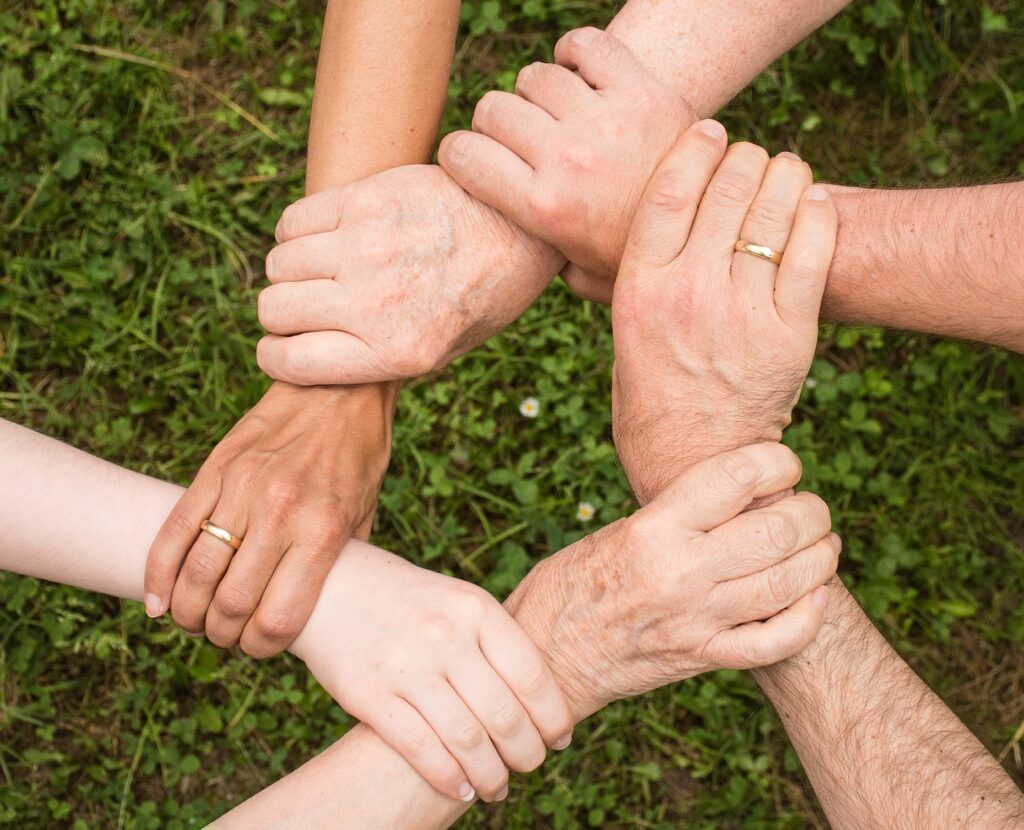
The Art of Covert Saving
When your safety depends on secrecy, traditional budgeting advice falls short. Covert budgeting techniques become lifelines for survivors who need to build resources without detection. The art lies in finding creative hiding spots that blend seamlessly into everyday life.
Your home is full of unexpected treasure vaults. Research shows that budgeting as a survivor involves creative, covert stashing to avoid detection. Think beyond obvious places like cereal boxes with false bottoms, hollow spaces inside thick books, or old purses tucked in closets work surprisingly well. One survivor shared how she taped bills inside her bathroom vent. Strange? Maybe. Effective? Absolutely. The key is choosing spots that seem natural but unlikely to be disturbed during routine activities. Under furniture offers another layer of concealment. Tape envelopes to the underside of drawers or behind picture frames. These locations stay accessible to you while remaining invisible to others.
Know the Risks
Every safe budgeting tip starts with understanding your specific situation. Test your hiding strategy gradually. Start with small amounts to see if locations remain undisturbed. If something feels off, trust your instincts and relocate your stash immediately. Consider the unpredictability factor, your safety depends on it. Rotate hiding spots occasionally. What worked last month might not be secure forever. Small denominations add up faster than you think. A roll of quarters represents more than $10 it’s tangible progress toward emergency fund creation. Gift cards serve as alternative currency, letting you secure groceries or necessities without leaving obvious financial trails.
“Financial abuse takes away your sense of safety. Hiding money, even a little, became my small way of fighting back.” – Ava Martinez
Todays Technology offers modern solutions for hiding money from an abuser, but digital tools carry their own risks. Banking apps with disguised icons or generic names can quietly grow your nest egg. However, remember that digital footprints exist phone bills, app notifications, and account statements can reveal your activities. Consider using apps that look like games or utilities. Some savings apps allow you to customize icons and names, making them virtually undetectable on your phone’s home screen. Remember, even small amounts matter. Every dollar you save independently represents a step toward freedom and security. You’ve probably heard about the classic 50/30/20 budgeting rule 50% for needs, 30% for wants, and 20% for savings. But what happens when you need to budget with the 50/30/20 rule while keeping your financial moves hidden? The truth is, this traditional approach requires some serious adjustments when safety is your top priority. When your income is unpredictable or needs to stay secret, the standard percentages don’t always work. Research shows that the 50/30/20 rule is adaptable but can look dramatically different for those evading financial control. Instead of thinking in neat monthly chunks, you might be working with whatever cash you can safely access maybe $20 here, $50 there. Your emergency budgeting for victims might look more like 80% needs, 10% escape savings, and 10% for everything else. This isn’t failure, it’s smart adaptation to your reality.
Forget about the traditional “wants” category for now. Your version focuses on survival essentials: shelter you can access safely, food that won’t raise suspicions, and creating quiet escapes when you need them. That coffee with a trusted friend isn’t a luxury it’s a lifeline. Your needs category expands to include things like prepaid phone cards, transportation to safe places, or small items that help you feel more secure. These budgeting strategies for abuse survivors recognize that emotional safety costs money too. But what if you only have $10 instead of $100? You can still apply budgeting principles on a micro level. Maybe $8 goes to immediate needs and $2 goes into your hidden stash. As Rachel Chen shared,
“Even with $20 a week, I made sure $2 went to a safe place just for me.”
These micro-savings moments setting aside just $1 to $5 whenever possible add up faster than you’d think. Every small amount moved to safety is a victory. Cash envelope systems work particularly well for survivors because they physically separate your money by purpose. Keep one envelope for daily needs, another for your escape fund, and a third for emergencies. Store them in different, secure locations. Save receipts strategically not for every purchase, but for important ones that prove your financial activity patterns. This helps with financial safety planning and can provide evidence if needed later. Consider opening a small savings account at a different bank, even if you can only deposit $5 at a time. Use an address where mail won’t be intercepted maybe a trusted friend’s house or a PO box. The key is recognizing that emergencies often force survivors to reprioritize essential needs. Your budget might change weekly or even daily, and that’s okay. You’re not just managing money—you’re managing survival.

Building a Circle of Trust and Support
When you’re hiding money from an abuser, your neighbour might become more valuable than any high-interest savings account. Research shows that building a support network is vital financial independence rarely happens in isolation. Sometimes that co-worker who always asks how you’re doing could be the lifeline you never expected. Think about it this way: a trusted friend can hold your emergency cash when keeping it at home isn’t safe. They can receive mail you can’t risk having delivered to your address. These aren’t just nice gestures they’re strategic advantages that support services for financial abuse recognize as essential survival tools.
Practical Steps for Safe Communication
Opening a P.O. box gives you a secure mailing address, but it costs money and requires identification that might raise questions. A friend’s address works just as well. Use their phone number for important calls banking, job applications, apartment hunting. You’re not asking them to lie; you’re asking them to be your safety net. Consider getting a prepaid phone or using apps that don’t show up on shared phone bills. Your sister, your best friend from college, even that reliable co-worker they might be willing to let you use their number for call backs from potential employers or landlords. Telling even one trusted person about your covert budgeting makes the process less lonely and more manageable. You don’t have to carry every financial decision alone.
‘My sister-in-law held spare cash for me, no questions asked. That buffer was my first step toward freedom.’ – Maria Lopez
This isn’t about finding someone to solve your problems. It’s about having relationship abuse support that understands the stakes. When someone knows your situation, they can help you spot opportunities you might miss and warn you about risks you haven’t considered. Specialized organizations provide both support and practical financial resources that go beyond what friends and family can offer. Always contact The National Domestic Violence Hotline and they will connects you with local services, including financial counsellors who understand abuse dynamics. Many community organizations offer emergency cash assistance through local non-profits. These aren’t loans you’ll need to repay they’re grants designed specifically for people in your situation. Some provide gift cards for groceries or gas, while others help with security deposits on apartments.
Resources for financial planning include:
- YWCA financial empowerment programs
- Local domestic violence shelters with financial counselling
- Legal aid societies offering free financial planning advice
- Community action programs with emergency assistance funds
The key is reaching out before you’re in crisis mode. These organizations offer confidential support, emergency grants, and essential guidance that can expand your options significantly. Even sharing your plan discreetly with professionals reduces risk while increasing your practical choices for moving forward safely. When you’re planning for safety, having key documents for safety ready can mean the difference between a smooth escape and dangerous delays. Research shows that financial abuse occurs in 99% of domestic violence cases, making document preparation a critical survival skill.
Your Grab-and-Go Document Kit
Start by gathering five essential items: your ID, bank cards, health insurance information, Social Security card, and proof of income. These key financial documents form your foundation for independence. Don’t forget medical records, especially if you have ongoing health needs or take prescription medications.
Auto insurance considerations deserve special attention. If you’re on a joint policy, you’ll need to understand your coverage before leaving. Consider whether you can separate the policy or if you’ll need new coverage entirely. Having your insurance card and policy details ready prevents gaps in protection when you need it most.
Smart Copy and Stash Strategies
Creating backups requires careful balance. Safe handling of documents is a crucial part of financial safety planning, but you need multiple access points without leaving obvious trails.
Consider these backup methods:
- Scan documents to a secure email account only you control
- Take photos and store them in encrypted cloud storage
- Keep physical copies in a safe deposit box
- Leave duplicates with a trusted friend or family member
“I took photos of every card and statement, saved them to a cloud only I could access.” – Jessie Thompson
Each method has trade-offs. Digital copies offer quick access but create potential security risks. Physical copies in safe deposit boxes provide security but limit immediate availability. Keeping your financial documents separate from your abuser’s creates immediate advantages. You maintain control over your information and expand your post-escape options. When documents aren’t mixed together, you can act independently without alerting anyone to your plans. This separation becomes especially crucial for financial security strategies. Having your own bank statements, credit reports, and insurance information means you can apply for housing, jobs, or loans without depending on shared accounts or documents.

Avoiding Digital Footprints
Digital records are both an asset and a risk, know how to shield them. Common mistakes can expose your planning efforts.
Watch out for these digital slip-ups:
- Using shared computers or devices to access sensitive accounts
- Saving passwords in browsers on family computers
- Storing documents in easily discovered cloud accounts
- Forgetting to clear browser history after document research
Create separate, secure email accounts for document storage. Use devices your abuser doesn’t access. Clear your digital tracks after each session. Remember, technology can be your ally or your enemy the difference lies in how carefully you use it. Sometimes your journey toward financial independence for survivors feels like something out of a thriller movie. You’re hiding money in ways that would make Hollywood scriptwriters take notes. But here’s the thing these aren’t dramatic plot devices. They’re real survival tactics that domestic violence survivors use every day. Picture this: You’re down to your last few dollars, groceries are running low, and then you remember that old winter coat hanging in the closet. You slip your hand into the pocket and find a crumpled $10 bill you forgot about months ago. That moment? It’s not just finding money it’s finding hope when all hope seemed gone.
Building a secret budget while dealing with financial control tactics is like trying to grow a flower in complete darkness. You can’t see the progress clearly, you’re not sure if anything is actually growing, but somehow with careful attention and tiny amounts of care something real starts to take shape. Research shows that survivors’ financial empowerment happens through these small, often invisible victories. Your budget might look unconventional. Instead of neat spreadsheets, you might use cryptic calendar reminders. “Feed the cat” could mean moving $5 to your hidden fund. “Water plants” might signal it’s time to check your secret savings. These coded messages protect your financial planning from prying eyes while keeping you on track.
Emergency gig apps become your lifeline when you need quick income. Local temp jobs offer short-notice opportunities that can fill gaps in your budget. But sometimes the most unexpected sources make the biggest difference finding loose change in couch cushions, selling items online, or trading favours with trusted friends for groceries. You learn to think creatively about money. Maybe you swap childcare services with a neighbour in exchange for meals. Perhaps you find small tasks on community boards that pay cash immediately. Every micro-win, even saving $5, can feel transformative when you’re building financial independence from zero.
“Every secret dollar felt like a silent protest.” – Dana Wilson
This quote captures something powerful about the survivor experience. Each dollar you save isn’t just money it’s reclaiming power. It’s proving to yourself that despite the control tactics, despite the fear, you can still take steps toward independence. Your our path to financial freedom won’t look like anyone else’s. It’s nonlinear, marked by setbacks and surprise breakthroughs. Some days you’ll find that forgotten $10. Other days you’ll realize you’ve quietly saved $50 without even noticing. These aren’t accidents they’re evidence of your resilience. Every bit of financial power you reclaim chips away at the control that once seemed absolute. Your movie script budget isn’t chaotic it’s adaptive. It’s proof that even in the darkest circumstances, you can nurture something that grows toward light.
Budgeting as a survivor isn’t about perfection or spreadsheets; it’s about tiny victories and clever strategies that help you regain financial independence one hidden bill, one support call, or one password-protected savings account at a time.